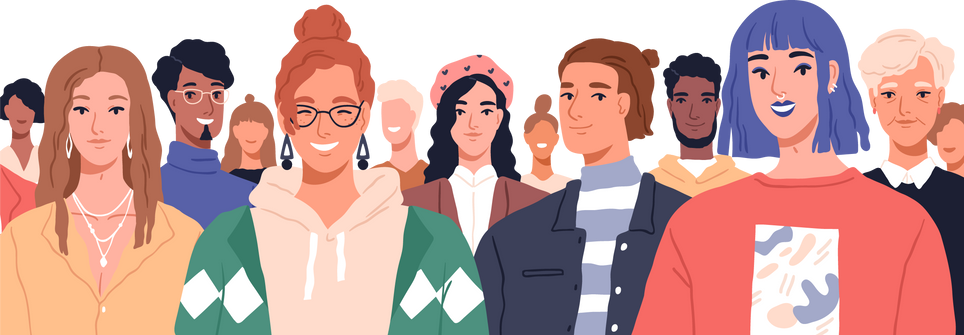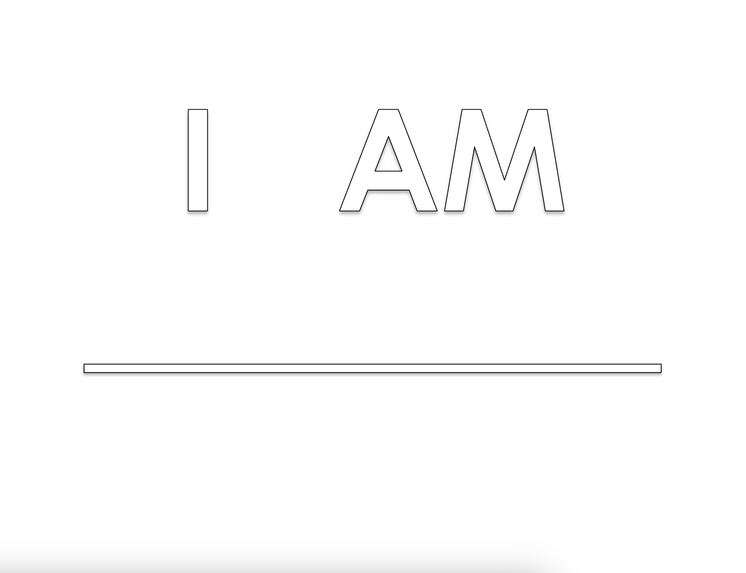Help us stop bullying and racism
Videos & Resources
Self Support
It’s important to support yourself. You can do this by being yourself, embracing who you are and knowing that you are enough! You can create I AM statements that help to think about all the things that are good about you and build yourself up.
Tell us your I AM statement here, and we might put it on our website:
Be yourself: “To be yourself in a world that is constantly trying to make you something else is the greatest accomplishment” – Ralph Waldo Emerson
Embrace who you are: “You’ll never know who you are unless you shed who you pretend to be” – Vironika Tugaleva
You are enough: You alone are enough. You have nothing to prove to anybody.
“Your self-worth is determined by you. You don’t have to depend on someone telling you who you are” – Beyonce
The hardest challenge is to be yourself in a world where everyone is trying to make you be somebody else.
You are beautiful, never let anyone tell you differently.
You matter!

Videos & Resources
Some anti-racism kids' books are:
- "You Have a Voice" by Fabiana Faiallo
- "The Color of Us" by Karen Katz
- "The Other Side" by Jacqueline Woodson
- "Brown Girl Dreaming" by Jacqueline Woodson
- "I am an Antiracist Superhero" by Jennifer Nicole Bacon
- "What Makes Us Unique?: Our First Talk About Diversity" by Dr. Jillian Roberts
Some anti-bullying kids' books are:
- "Mud Boy" by Sarah Siggs
- "Lunch Every Day" by Kathryn Otoshi
- "The Juice Box Bully" by Bob Sornson
- "The Invisible Boy" by by Eleanor Estes
- "The Name Jar" by Yangsook Choi
- "A Kids Book About Bullying" by Elizabeth Tom
- "I Can Stand Up to Bullies: Finding Your Voice When Others Pick on You" by Dagmar Geisler
Print a flyer for your school:
About Bullying
Bullying is a form of aggressive behavior in which someone intentionally and repeatedly causes discomfort or injury to someone. Bullying is intentional behavior that hurts someone else. It includes things like name calling, hitting, pushing, spreading rumors or threatening someone. It can happen anywhere - at school, at home or online. It’s usually repeated over a long period of time and can hurt you physically, mentally and emotionally.
We can usually identify bullying through the following three characteristics: intent, repetition, and power. A bully intends to cause pain, either through physical harm or hurtful words and does so repeatedly. Bullying is a pattern of behavior, rather than an isolated incident. There are different types of bullying:
- Verbal bullying: Name calling, teasing, insults, racist or homophobic comments
- Social bullying: Humiliation or harm to reputation, such as spreading rumors, getting others to exclude the individual, or cruel jokes meant to embarrass
- Physical bullying: Hitting, pushing, or damage to property
- Cyberbullying: Bullying that happens via digital devices like cell phones or computers, often through social media or texting
Fast Facts about Bullying:
- Bullying has been shown to be linked to depression, low self-esteem, and loneliness.
- Youths who are bullied are less likely to succeed in school.
- In 2021-22, about 19 percent of students ages 12-18 reported being bullied during school.
- Of students who were bullied, 22 percent reported that the bullying happened online or by text.
- 70% of 90 kids witness bullying.
- Higher for female students than for male students
- Highest for students of two or more races (30 percent)
Other types of bullying:
- Being pushed, shoved, tripped, or spit on (5 percent)
- Being excluded from activities on purpose (4 percent)
- Being threatened with harm (3 percent)
- Having others try to make them do things they did not want to do (3 percent)
- Having others share their private information, photos, or videos on purpose (3 percent)
- Having property destroyed by others on purpose (1 percent)
Minority Students:
It seems not all students are bullied equally. Research has shown that students belonging to various minority groups are often more likely to be bullied. These groups include students with disabilities, LGBT students, religious minority students, and racial minority students.
- Students with disabilities are known to be bullied more.
- Bullies are not always kids. Studies have found some can be teachers.
- Kids in special education are more likely to be verbally abused by staff.
Being a bully is a behavior:
Anyone can bully or be bullied, whether they are male or female, whether they are popular or not, or whether they get good grades or not. Many bullies have high self-esteem, but some are victims of bullying themselves.

About Racism
The first thing you need to know about racism is that it's not okay. Racism is discrimination and prejudice against people based on their race or ethnicity. Racism is a belief that humans could be divided or separated from groups or activities because of their skin color/race, and can involve bullying someone for having a different color of skin tone. This has been taking place in schools, leaving kids hurt and depressed. It can be present in social actions, practices, or political systems that support the expression of prejudice in discriminatory practices.



Racism can happen in different ways, both overt and subtle. Some examples of racism:
● Segregation that keeps people separate from activities, groups, and partner work based on their race in schools or public facilities.
● Microaggression is everyday verbal, nonverbal, or insults that make rude or racial comments.
● The security guard who follows you around the store because of the color of your skin.
● The police officers who stop and search you without cause.
● The business that denies you service.
● The white people who cross the street when you approach, avoid sitting next to you on the bus, or hold their bags tighter when you step into an elevator.
How You Can Help
HOW TO HELP WITH BULLYING
You can make a difference! Bullying can lead to significant mental, developmental, and social consequences, making it important to stop.
Many people, especially bystanders, can play an important role in preventing bullying and racism. A bystander is anyone who witnesses bullying and racism, whether in person or through digital means such as social media, websites, text messages, gaming, and apps. A bystander has the potential to make a positive difference in these situations.
When there is help from someone who witnesses the bullying as a bystander and speaks up, 57% of the time the bullying stops in 10 seconds.
- Speak up: One small action can change the outcome
- Be part of a group of people working together to stop bullying
- Talk about bullying
- Share this website to help create awareness and educate the community
- Build a safe school environment
Not sure what to do, or if you're being bullied? Take our quiz for advice on what to do.
ADDRESSING RACISM IN SCHOOLS:
What if your son or daughter comes home and tells you about an incident at school in which they were singled out or discriminated against because of the color of their skin? Whether they experienced bias from a teacher, school administrator, or another student, this could be extremely upsetting and unsettling for your child and you as well.
How to Deal with Racism:
- If you are feeling hurt or threatened, try removing yourself from the situation.
- If it keeps going on, you can tell a trusted adult, teacher, parent about the situation and they can help.
- You can also talk to your friends or join in groups with people who have been through the same issue and remember to stay confident and be positive.
According to the book “How to Fight Racism Young Readers Edition” by Jemar Tisby, people can help stop racism through the ARC of racial justice:
● A-Awareness: Kids should be aware of their surroundings and if they see something say something. ● R-Relationships: Kids should have friendships with all Races. Kids can learn about different backgrounds and cultures from them.
● C-Commitment: Lawmakers should ensure everyone treated fairly and has the same opportunities.
Things We Can Do About It:
1. Start talking about it: Don’t be afraid to have uncomfortable conversations. Talking about race can be uncomfortable and complicated. Still, it is these tough conversations that can help your teen grow into an informed, socially, and culturally conscious adult.
2. Help transform systems: Teachers, administrators, and schools can be allies in this work. When parents are prepared to meet challenging moments, they can share strategies and best practices with school leaders.
3. Don’t ignore it: You may be tempted to sweep race matters under the rug or downplay them. We’re here to tell you that’s not a good idea.
4. Contact the school: If you and your child choose to bring the incident to the attention of the school, be sure to complete an incident report if that’s an option. It’s the school’s job to create safe spaces for all students, and it’s their responsibility to understand the role of race in their school and address issues of discrimination and bias when they occur.
5. Ask questions and do not give up: It is important to follow up. This is a serious issue that should not be happening in 2024. If you witness racism in schools, go to a teacher or principal.

About Us
We are Girl Scout troop 1214, and we created this website for our Bronze Award project. Our project wants to help with racism and bullying in our schools. It’s important to us because we know how it feels to be bullied, and we’ve all seen racism and bullying at school ourselves. Sometimes kids who see bullying and racism don’t tell or get help because they’re scared that they will get in trouble or be a tattle-tale. Our project wants to help kids who see bullying to have courage and to go get help. We also want to help kids who are being discriminated against to know what to do and to not feel alone.












